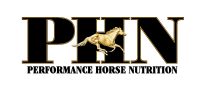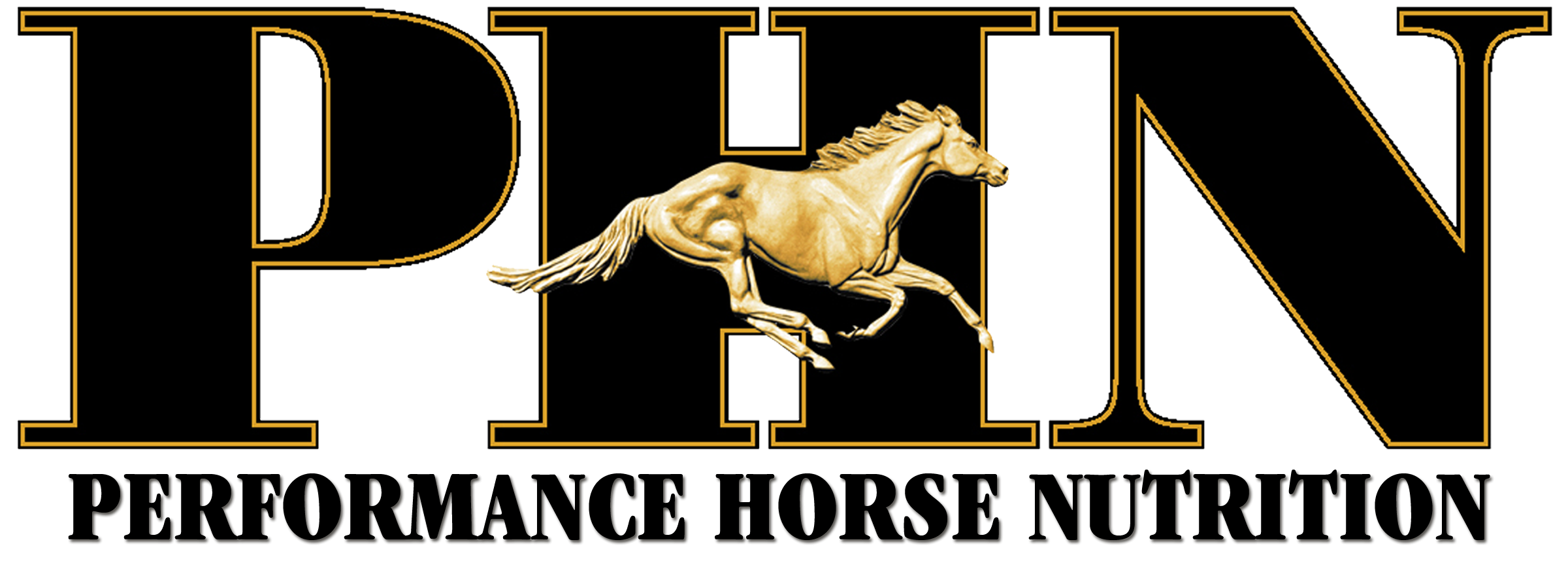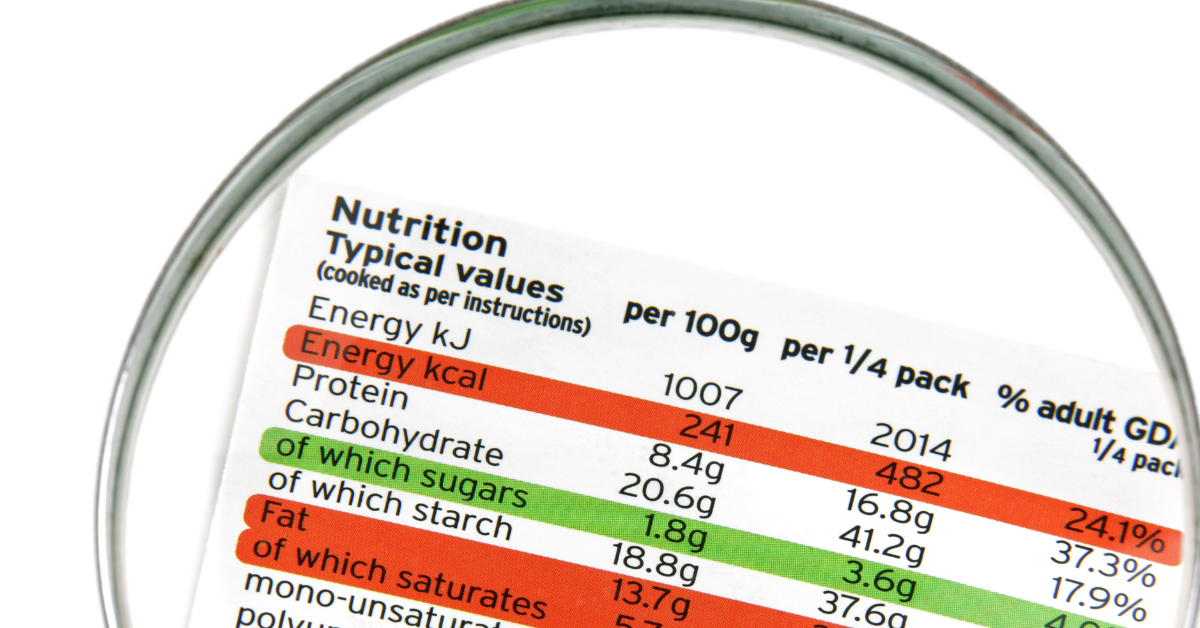important factors to consider when using
DIGESTIBLE ENERGY
to compare commercial feed products
2021

Written by Performance Horse Nutrition
An important measure of a horse feed’s value is its energy content. Energy density determines how much feed must be fed to meet an animal’s energy requirement. How much you need to feed then determines the concentration of all other nutrients in the feed. Diets tend to be formulated initially to meet the energy needs of the horse and then adjusted regarding protein, minerals and vitamins. Therefore, horse feeds cannot be properly formulated without knowledge of their energy contents.
Unfortunately it’s not possible to directly measure the amount of useful energy contained in feed as you can with other variables such as protein and minerals. This is primarily because all food calories are not the same; they differ chemically and these chemical differences affect the mechanism and efficiency of digestion and metabolism and therefore health and performance. Energy is supplied to the horse via its diet, but fundamentally energy is not a nutrient but rather the capacity to do work. Food energy comprises the potential chemical energy of carbohydrates (including sugars, starches and fibres), fats and proteins. Part of it can be converted to other body chemicals and mechanical work (useable energy), with the remainder lost as waste energy (mainly in the form of faeces, acid and heat).
When it comes to measuring energy content of food and feedstuffs it becomes very complicated. In the case of human food we commonly refer to calories as a measure of the foods energy density. What then is a calorie? In nutrition terms, the word Calorie (with a capital C) is used instead of the more precise scientific term kilocalorie which represents the amount of energy required to raise the temperature of a litre of water one degree centigrade at sea level. The common usage of the word calorie of food energy is understood to refer to a kilocalorie and actually represents, therefore, 1000 true calories of energy.
In the animal feeding industry energy can be broken down into four categories: gross energy, digestible energy (DE), metabolisable energy (ME), and net energy (NE). Gross energy of a feed represents the total amount of heat produced from the combustion of that feed. The digestible energy content of a ration is calculated by subtracting the gross energy in the faeces from the gross energy consumed by the animal. This is only an estimate of digestible energy as some of the material excreted in the feces does not originate from feed but from cells sloughed off the gastrointestinal tract as the food passes through. Metabolisable energy is calculated by subtracting the urinary and gaseous losses from DE. Net energy starts with ME and also takes into account numerous variables from energy stored in tissues to heat losses.
In America the energy content of horse feed is expressed as digestible energy (DE, Mcal/lb). However, DE is considered fairly archaic by most other livestock species when describing the energy content of feed. This is in part due to the large differences in how efficiently the digested energy is utilized from different feedstuffs. Therefore DE values should only be viewed as an estimate.
While there are several equations used to estimate DE we still lack a good means of accurately and easily predicting the energy content of different feeds. The equation shown is commonly used; however, it does not accurately predict the DE content of some high fibre feeds and feeds that are high in fat. Several other commonly used equine feed ingredients were approximately 40-50 % higher in DE when measured compared to predicted values. This inadequacy of the current equation to accurately predict the DE content of feeds higher in digestible fibres and fats becomes very important considering commercial equine feeds on the market today incorporate high amounts of readily digestible fibers and fat. The most accurate way of measuring DE is to carry out digestion trials for all feeds and feed ingredients. These however are very time consuming and costly to carry out. Research has also shown that digestibility may be affected by individual variation, exercise and diet form. More accurate systems of energy evaluation utilizing net energy have been developed, but have not been placed into widespread use because of a lack of information about NE requirements for various classes of horses and the NE contents of different feedstuffs.
There are no regulatory bodies telling equine feed manufactures which method or equation to use to estimate energy content of feed. This means companies can use whatever system they want to predict DE and this can potentially be very misleading to the end user. A feed could be represented as a low energy feed when in fact it is not.
This inconsistency in standardisation and prediction of energy content of feedstuffs undermines the selection of horse feeds based solely on the energy content of the feeds. It also makes it virtually impossible to compare energy contents of feeds between different manufacturers. Therefore DE values should not be relied upon when making decisions about what feed is right for your horse.
Other balances relating to energy sources in the diet should be considered when selecting feeds for individuals including:
- Sufficient carbohydrate to help maintain ample energy without overloading the digestive capacity of the horse or causing metabolic disturbances.
- Adequate fat to maintain the required energy without negatively affecting palatability and gastrointestinal function.
- Sufficient fibre to maintain normal gut and digestive function and limit behavioural disturbances.
Whilst we would like to share our estimates of DE, we feel that it is not in the best interests of the consumers to add this information to our tags. We need to standardise the prediction equations the feed industry as a whole use to calculate DE, so that the end user can actually compare between companies. We also need to devise more accurate methods of determining energy content of feeds as has been done in other livestock species.
Commonly used formula for calculation of Digestible Energy:

National Research Council. Nutrient Requirements of Horses. 6 ed. Washington DC: National Academy Press; 2007.

